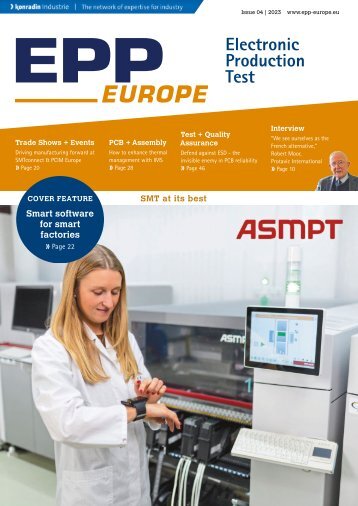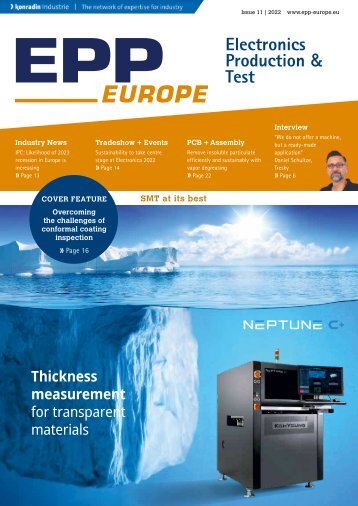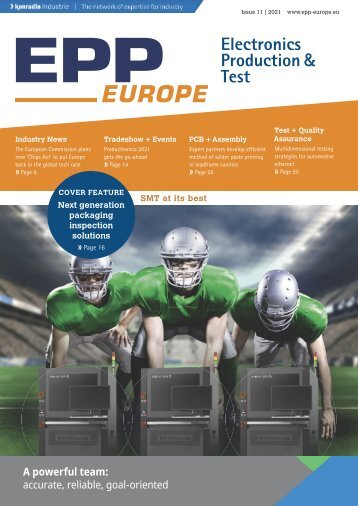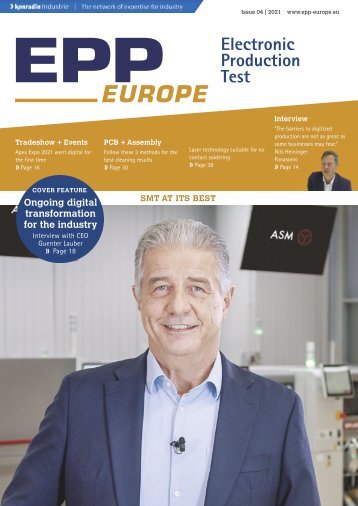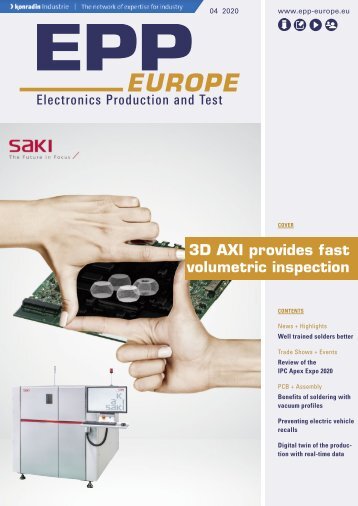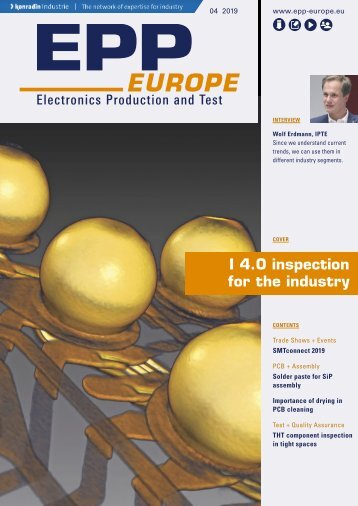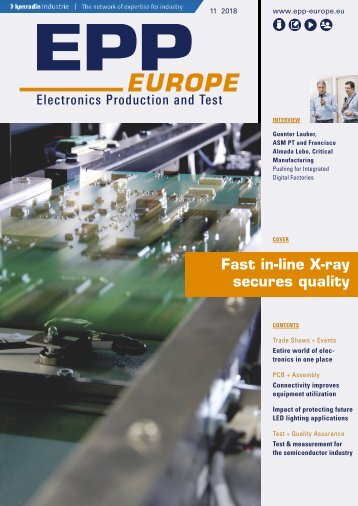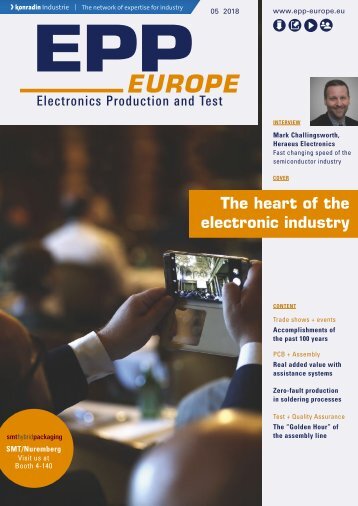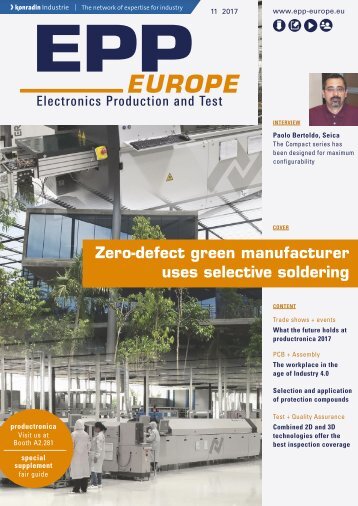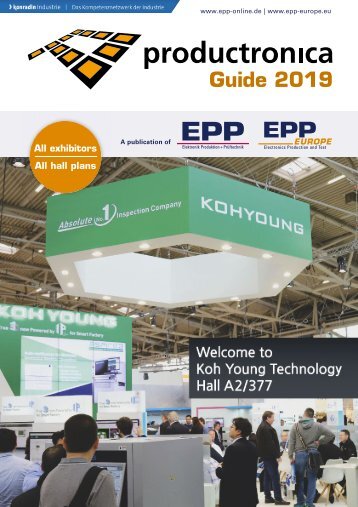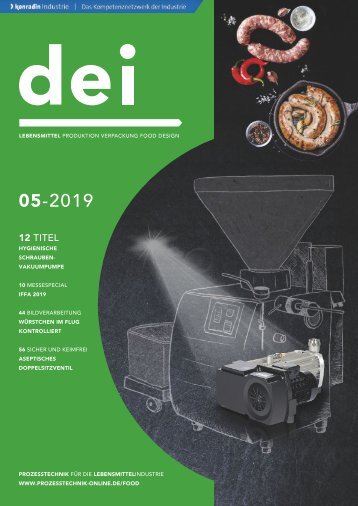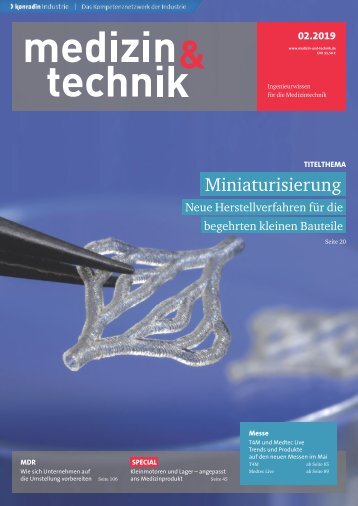EPP Europe P2.2022
- Text
- Measurement
- Assembly
- Semiconductor
- Soldering
- Solutions
- Manufacturing
- Components
- Electronic
- Inspection
- Electronics
COVER STORY » CCI
COVER STORY » CCI SOLUTIONS Thickness measurement for transparent materials ANZ_KOHYOUNG_epp_europe_316x207_3__01_2209_4c.indd 1 20.09.22 12:52 Koh Young examines the future of dispensing inspection (DPI) Overcoming the challenges of CCI 16 EPP Europe » 11 | 2022
AT A GLANCE In this article, Koh Young details the importance of accurate CCI and measurement, and explains how its new 3D in-line DPI equipment can conduct 2D and 3D inspection of transparent materials. Conformal coatings protect electronics from moisture, debris, and corrosion. They also add mechanical stability to help reduce failures and improve an electronic device’s reliability when it is exposed to harsh environments. But what happens if a coating is defective or simply too thin? Koh Young discusses the challenges of conformal coating inspection (CCI) and how its latest Neptune series can help. A conformal coating is a transparent protective film with a thickness of around 50um applied to a PCB to protect the board and its components from corrosion (caused by vibration, temperature changes, and so on) and from the environment. It is used on parts that need to offer increased product reliability via dustproofing and waterproofing. As conformal coatings significantly reduce the chance of circuit failure due to moisture, they are now being increasingly applied to products which necessitate a high level of reliability. There are various coating methods used today including dipping, brushing, and spraying. Selective spraying methods that only coat a specific area are also being more widely used. In addition to conformal coatings, various other dispensing technologies such as underfill and overcoating are emerging in the market. Underfill redistributes the thermomechanical stress created by the coefficient of thermal expansion mismatch between the silicon chip and organic substrate and is often applied to BGAs and CSPs in semiconductors or during SMT processes. In some medical applications, a droplet-shaped coating needs to be placed on the pad, in a process known as overcoating, and the height of this droplet needs to be measured. Indeed, as this example makes clear, some dispensing applications now also require specific inspection processes. EPP Europe » 11 | 2022 17
- Page 1 and 2: Issue 11 | 2022 www.epp-europe.eu E
- Page 3 and 4: » EDITORIAL » EDITORIAL Dear read
- Page 5 and 6: Vapor degreasing: almost all semico
- Page 7 and 8: duce machines in high quantities wi
- Page 9 and 10: NEWS & HIGHLIGHTS « 3. Digital sup
- Page 11 and 12: Boost for U.S. semiconductor indust
- Page 13 and 14: NEWS & HIGHLIGHTS « QUALITY PIEKTR
- Page 15: TRADE SHOWS & EVENTS « ified the g
- Page 19 and 20: The LIFT measurement principle. The
- Page 21 and 22: MK Versuchsanlagen PCB maker acquir
- Page 23 and 24: Bild: Microcare Particulate contami
- Page 25 and 26: Rework technologies PDR launches in
- Page 27 and 28: Versatile format The biggest differ
- Page 29 and 30: Product Updates « PCB & ASSEMBLY I
- Page 31 and 32: PCB & ASSEMBLY « Source: ED&A Sour
- Page 33 and 34: Adhesives manufacturer strengthens
- Page 35 and 36: Dual-curing adhesive for medical de
- Page 37 and 38: Selective soldering systems Sasinno
- Page 39 and 40: New online offering for 4K digital
- Page 41 and 42: Source: Göpel electronic AXI text
- Page 43 and 44: Zusammenfassung Röntgensysteme mü
- Page 45 and 46: RF performance characterization Tes
- Page 47 and 48: G3VM-21MT reference design board te
- Page 49 and 50: The range of T-circuit MOSFET relay
- Page 51 and 52: MEETINGS & COURSES Jan. 21-26 CONFE
Inappropriate
Loading...
Mail this publication
Loading...
Embed
Loading...


